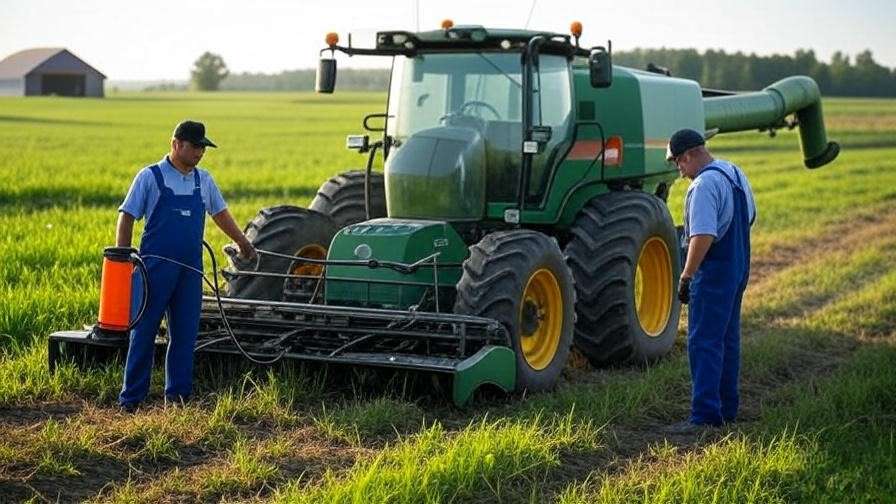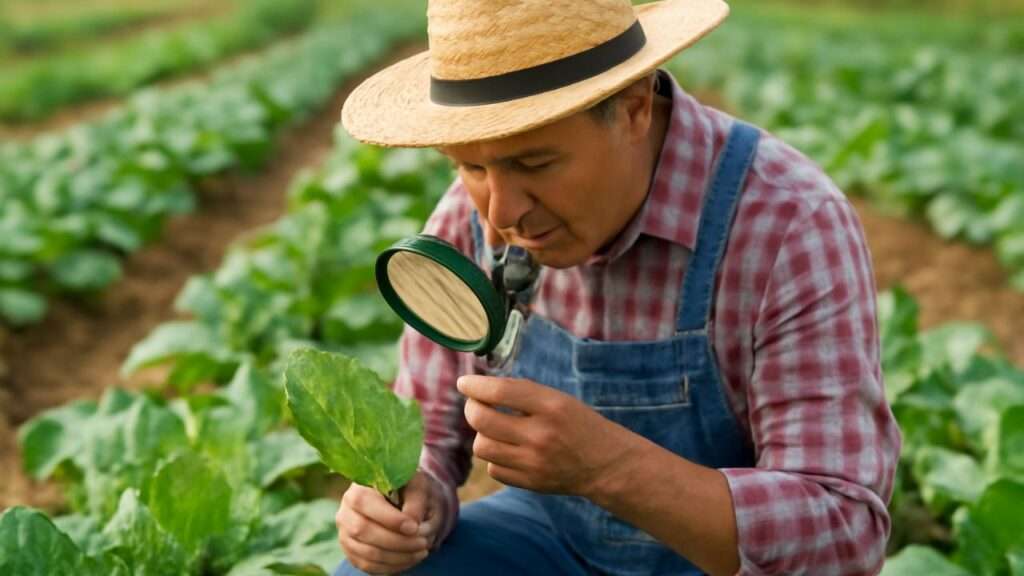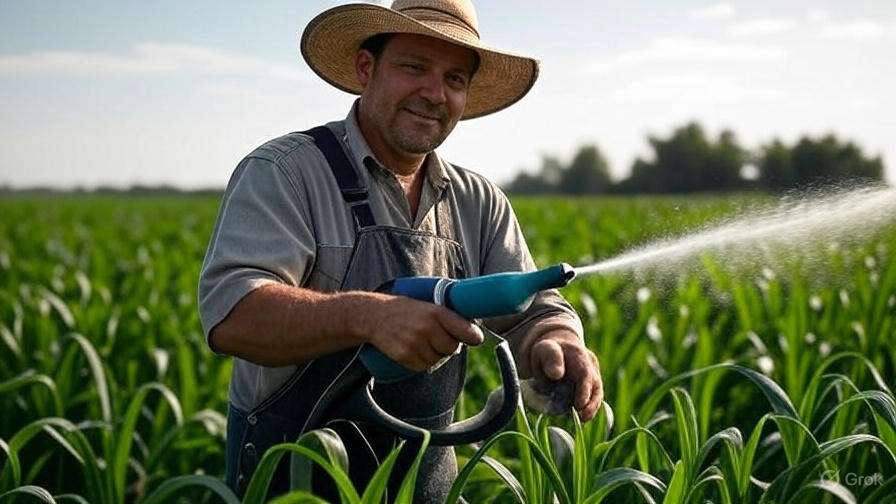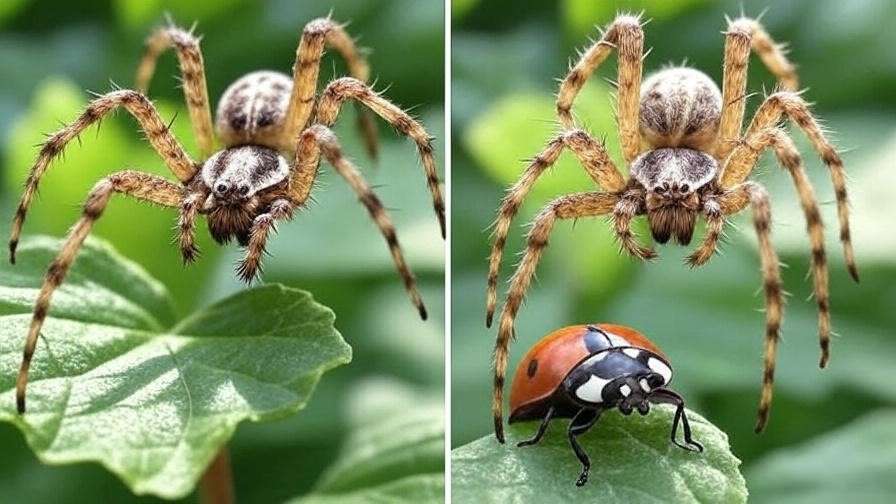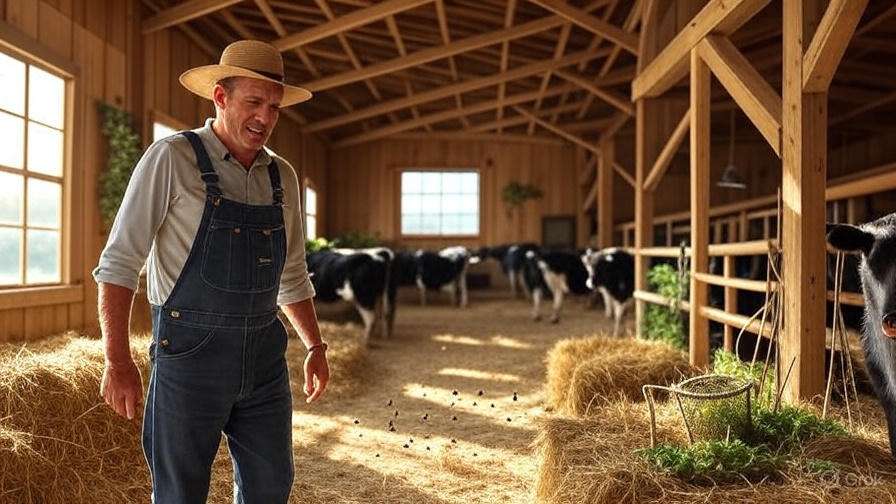Imagine starting your tractor on a crisp morning, only to hear a strange rustling from the engine compartment. You pop the hood and find a nest of mice, chewed wires, and droppings scattered across your equipment. This nightmare scenario is all too common for farmers, where automotive pest control becomes a critical yet often overlooked aspect of farm maintenance. Pests like rodents, insects, and birds can wreak havoc on farm vehicles, causing costly repairs, downtime, and even health risks. Drawing on years of agricultural expertise and insights from pest control professionals, this guide offers actionable strategies to protect your tractors, trucks, and ATVs. Read on to discover how to safeguard your fleet, save money, and keep your farm running smoothly.
Why Automotive Pest Control Matters for Farmers
The Hidden Risks of Pests in Farm Vehicles
Pests in farm vehicles are more than a nuisance—they’re a threat to your livelihood. Rodents like mice and rats can chew through wiring harnesses, leading to electrical failures that cost hundreds or thousands to repair. According to the National Pest Management Association, rodent damage to vehicle wiring is a growing issue, with repair costs averaging $500-$1,200 per incident. Insects such as ants or cockroaches can invade upholstery, leaving behind contaminants that pose health risks, especially in vehicles used to transport produce or livestock. Bird droppings, meanwhile, can corrode paint and metal, reducing vehicle longevity.
Beyond financial damage, pests can disrupt your operations. A tractor sidelined by a rodent-damaged fuel line can delay planting or harvesting, costing you valuable time during critical seasons. Health risks from pest droppings, such as hantavirus or allergens, also threaten farmers and workers who spend hours in vehicle cabs. Proactive automotive pest control is essential to protect your equipment and ensure uninterrupted farm productivity.

Why Farm Vehicles Are Vulnerable
Farm vehicles face unique pest challenges compared to urban cars. Tractors, trucks, and ATVs are often parked near fields, barns, or grain storage areas—prime habitats for pests. Open cabs and engine compartments provide easy access for rodents seeking warmth or nesting materials. Seasonal inactivity, especially during winter, makes vehicles sitting in sheds or fields particularly vulnerable to infestations. Unlike urban vehicles driven daily, farm equipment may sit unused for weeks, giving pests ample time to settle in.
Dr. Emily Carter, an agricultural engineer with over 15 years of experience, emphasizes, “Farm vehicles are pest magnets due to their environment and intermittent use. Regular maintenance must include pest prevention to avoid costly surprises.” Understanding these vulnerabilities is the first step to implementing effective pest control measures tailored to your farm’s needs.
Common Pests Targeting Farm Vehicles
Rodents (Mice, Rats, Squirrels)
Rodents are the most destructive pests for farm vehicles. Mice and rats can squeeze through gaps as small as a quarter-inch, making engine compartments and cabs easy targets. They chew on wires, insulation, and hoses, often using upholstery or air filters for nesting. Squirrels, common in orchards or wooded areas, may stash nuts in air vents, causing blockages. Signs of rodent activity include droppings, gnaw marks, shredded materials, or a musty odor in the cab.
Insects (Ants, Wasps, Cockroaches)
Insects pose a different but equally serious threat. Ants can infiltrate through tiny cracks, attracted by food crumbs or spilled liquids in cabs. Wasps may build nests in air vents or under hoods, creating hazards for operators. Cockroaches, thriving in warm, enclosed spaces, can contaminate surfaces and trigger allergies. These pests can also cause electrical issues if they nest near wiring or circuit boards.
Birds and Other Wildlife
Birds, such as sparrows or pigeons, often perch on farm vehicles, leaving corrosive droppings that damage paint and metal. In open-cab vehicles, birds may even nest in seats or dashboards. Small wildlife like snakes or raccoons can occasionally access vehicles, especially those parked near wooded areas or water sources, causing unexpected damage or safety risks.
Tip Box: Spotting Pest Activity
- Look for droppings, chew marks, or nesting materials (e.g., shredded paper, fabric).
- Listen for scratching or rustling sounds in the engine or cab.
- Check air filters and vents for blockages or debris.
- Smell for musty or ammonia-like odors indicating pest presence.
Effective Automotive Pest Control Strategies
Preventative Measures to Keep Pests Out
Prevention is the cornerstone of automotive pest control. Start by keeping vehicles clean. Remove food scraps, grain, or spilled liquids from cabs and cargo areas, as these attract pests. Store vehicles in enclosed sheds or barns whenever possible, and use fitted covers for equipment left outdoors. Regularly inspect and seal entry points, such as gaps around doors, windows, or engine compartments, using weatherstripping or silicone caulk.
Parking vehicles away from pest-prone areas, like grain silos or overgrown fields, reduces exposure. For long-term storage, elevate tires off the ground using jack stands to deter rodents from climbing. These simple steps create a strong first line of defense against infestations.
Natural and Non-Toxic Repellents
For eco-conscious farmers, natural repellents offer effective, safe solutions. Peppermint oil-soaked cotton balls, placed in engine compartments or cabs, can deter rodents due to their strong scent. Replace them every 2-3 weeks for consistent protection. Ultrasonic devices, which emit high-frequency sounds inaudible to humans, can also repel pests when plugged into vehicle power sources or nearby outlets. Mothballs, while effective, should be used cautiously due to their toxicity around livestock or food crops.

How to Apply Peppermint Oil:
- Soak 5-10 cotton balls in pure peppermint oil.
- Place them in key areas (e.g., near wiring, in air vents, under seats).
- Secure them in small mesh bags to prevent oil from contacting surfaces.
- Refresh every 2-3 weeks or after heavy rain.
These methods align with organic farming standards and minimize environmental impact, making them ideal for sustainable operations.
Mechanical Traps and Barriers
For active infestations, mechanical traps are highly effective. Snap traps or glue boards placed in engine compartments or cabs can capture rodents without chemicals. Mesh screens over air vents and exhaust pipes prevent pests from entering while allowing ventilation. Check traps weekly and dispose of captured pests safely to avoid health risks.
Trap Placement Tips:
- Position snap traps along vehicle edges or near known entry points.
- Use bait like peanut butter or seeds for higher success rates.
- Avoid placing traps where they could interfere with vehicle operation.
John Matthews, a farm equipment maintenance expert, advises, “Incorporate pest checks into your routine vehicle maintenance. A quick inspection for traps or repellents can save thousands in repairs.” Combining traps with preventative measures creates a robust defense system.

Advanced Pest Control Solutions
Professional Pest Control Services
For severe or persistent infestations, professional pest control services offer specialized expertise. These experts understand the unique challenges of agricultural environments and can tailor solutions for farm vehicles. They may use advanced techniques, such as heat treatments or targeted fumigation, to eliminate pests without damaging equipment. When choosing a service, opt for companies with experience in agricultural settings, as they’re familiar with the specific pests and conditions farmers face.
How to Choose a Reputable Pest Control Service:
- Verify certifications and licenses, ensuring compliance with agricultural regulations.
- Request references from other farmers or agricultural businesses.
- Ask for a detailed plan outlining methods safe for vehicles and livestock.
- Confirm follow-up services to prevent reinfestation.
Professional intervention is particularly valuable for large fleets or when pests cause recurring damage. According to a 2024 survey by the American Farm Bureau, 68% of farmers who hired professional pest control for equipment reported fewer repair costs within a year.
Technology-Driven Solutions
Innovative technologies are transforming automotive pest control. IoT-based pest monitoring systems, for instance, use sensors to detect pest activity in real time, alerting farmers via smartphone apps. These systems are ideal for large farms with multiple vehicles. Vehicle-specific pest repellents, such as wiring coatings infused with capsaicin (a natural deterrent), are also gaining traction. These coatings discourage rodents from chewing without affecting vehicle performance.
Emerging products like solar-powered ultrasonic devices can be mounted on vehicles or storage sheds, providing continuous protection. While these solutions require upfront investment, they offer long-term savings by reducing pest-related damage. Dr. Maria Lopez, a pest management researcher, notes, “Technology is revolutionizing pest control for farmers, offering precise, low-maintenance solutions that fit busy schedules.”

Case Study: A Farmer’s Success Story
Tom Reynolds, a soybean farmer in Iowa, faced recurring rodent damage in his combine harvester, costing $2,500 in repairs over two seasons. After consulting a pest control specialist, he implemented a combination of peppermint oil repellents, snap traps, and a vehicle storage cover. He also installed a basic IoT sensor to monitor pest activity. Within six months, Tom reported zero pest incidents, saving thousands and improving his harvest efficiency. His story underscores the value of a comprehensive pest control strategy.
Maintaining a Pest-Free Vehicle Fleet
Routine Inspections and Maintenance
Regular inspections are critical to keeping your farm vehicles pest-free. Create a monthly checklist to ensure consistent monitoring:
- Exterior Check: Look for droppings, chew marks, or nesting materials around tires, hoods, and cabs.
- Interior Check: Inspect upholstery, air vents, and dashboards for signs of insects or rodents.
- Engine Compartment: Examine wiring, hoses, and filters for damage or debris.
- Documentation: Log findings and repairs for insurance or warranty claims.
Integrate pest checks into your existing vehicle maintenance routine, such as oil changes or tire rotations. This proactive approach catches issues early, preventing costly repairs. For fleets, assign specific team members to conduct inspections, ensuring accountability.
Seasonal Considerations
Pest behavior varies by season, requiring tailored strategies:
- Spring: As rodents and insects become active, focus on sealing entry points and cleaning vehicles thoroughly after winter storage.
- Summer: High temperatures attract wasps and ants, so prioritize vent screens and natural repellents.
- Fall: Rodents seek warmth as harvests leave grain residue, making traps and storage covers essential.
- Winter: Inactive vehicles are prime targets, so use repellents and park in enclosed spaces.
Printable Maintenance Schedule Template
| Month | Task | Notes |
|---|---|---|
| January | Inspect engine, apply peppermint oil | Focus on stored vehicles |
| April | Clean cabs, check vents | Prepare for planting season |
| July | Install traps, monitor for wasps | Address summer pest surge |
| October | Seal gaps, use storage covers | Prep for harvest downtime |
This schedule ensures year-round protection, aligning with farm cycles.

Common Mistakes to Avoid
Overlooking Early Signs
Ignoring small clues, like a few droppings or minor chew marks, can lead to major infestations. A single mouse can produce up to 80 droppings daily, signaling a growing problem. Regular inspections and immediate action—such as setting traps or applying repellents—prevent escalation. Farmers who dismiss early signs often face repair bills exceeding $1,000, according to agricultural insurance data.
Using Harmful Chemicals
Pesticides designed for household use can damage vehicle interiors or pose risks to livestock and crops. For example, spraying chemical insecticides in a cab can leave toxic residues, endangering drivers or contaminating produce. Stick to natural or vehicle-safe repellents, and consult professionals for chemical treatments. Organic farmers, in particular, must avoid non-compliant products to maintain certifications.
Neglecting Long-Term Storage
Vehicles stored for weeks or months, such as during off-seasons, are highly susceptible to pests. Leaving a tractor uncovered in a field or an unsealed shed invites rodents and insects. Always clean vehicles before storage, apply repellents, and use protective covers. Elevating vehicles on jack stands further deters pests. One farmer shared, “I lost a season’s worth of work because mice nested in my combine over winter. A $50 cover could’ve saved me $3,000.”
FAQs About Automotive Pest Control
How can I tell if rodents are in my tractor?
Look for droppings, chew marks, or nesting materials like shredded fabric or paper. Listen for scratching sounds, especially at night, and check air filters for debris.
Are natural repellents effective for long-term pest control?
Yes, options like peppermint oil and ultrasonic devices deter pests effectively when maintained regularly. Combine them with traps and barriers for best results.
Can pest damage be covered by vehicle insurance?
Some policies cover pest-related damage, but coverage varies. Document all damage with photos and logs, and contact your provider to confirm eligibility.
How often should I inspect my farm vehicles for pests?
Monthly inspections are ideal, with additional checks before and after seasonal use. Integrate pest checks into routine maintenance for consistency.
What’s the safest way to use traps in a vehicle with pets or children?
Use enclosed snap traps or glue boards placed in areas inaccessible to pets or children, like locked engine compartments. Check traps frequently to avoid prolonged exposure.
Conclusion
Protecting your farm vehicles from pests is a vital part of agricultural success. From chewed wires to contaminated cabs, pests can disrupt operations and drain your budget. By implementing preventative measures, natural repellents, and routine inspections, you can safeguard your tractors, trucks, and ATVs. Advanced solutions like professional services or IoT monitoring offer additional protection for larger fleets. Start today with a simple step: inspect one vehicle for pest signs or apply a natural repellent. Share your challenges or tips in the comments to join a community of farmers tackling this issue. With these expert-backed strategies, you’ll keep your vehicles pest-free and your farm thriving.

